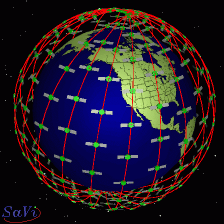Business
Jeff Bezos, Richard Branson, Mark Zuckerberg, Elon Musk, Google and Airbus are all vying to own the sky
Elon Musk, Richard Branson, Mark Zuckerberg and Jeff Bezos, are all vying to own the sky. There are also few companies without the marquee star power in the mix.
Published
5 years agoon
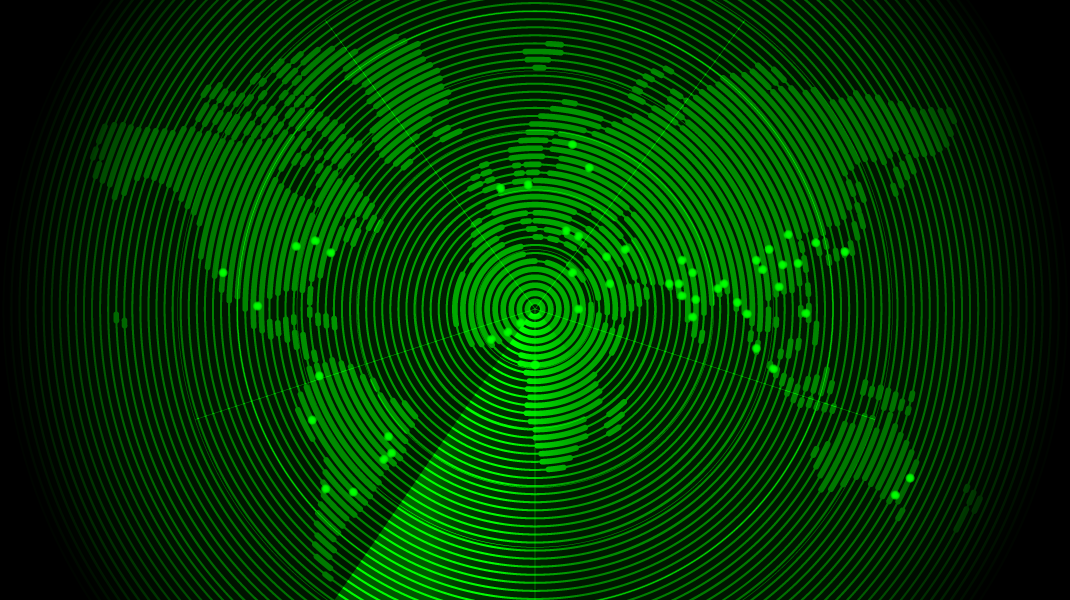
Photo / Adobe Stock
Tech Titans Race to “Give” Internet to Off-The-Grid Populations Across the Globe –
Bezos, Branson, Zuckerberg, Musk, Google, Softbank, Airbus are all vying to own the sky. There are also few companies without the marquee star power in the mix.
Something must be driving the world’s wealthiest into a race against each other to be the first to provide satellite internet access to the poorest and least connected on earth.
It’s all about the Zettabytes
For one, the numbers are staggering: an estimated 4 billion “customers” are not yet connected worldwide. “Unserved” and “Underserved” are the buzzwords, with the majority residing in Africa, India, and parts of South America.
In case you’re not Zetta-aware, a Zettabyte is one trillion Gigabytes, which is the approximate total amount of yearly internet traffic as of 2016.
Expectations for 2020 are in the 2.3 Zettabyte neighborhood (2.3 trillion Gigabytes). To handle the load, provide for the unserved and get to 5G speeds (expected to be the new norm), a major change is needed.
Read More: SpaceX Starship Aims for Suborbital Test Flight as Early as March
Meet LEO (no, not Dicaprio)
Low Earth Orbit micro-satellite constellations are what’s next. Not to be confused with Geosynchronous, a.k.a. Geostationary, which are fraught with latency issues. Instead, a LEO mesh network constellation can potentially achieve latency at 20-30 milliseconds vs. the 700 milliseconds typical with Geosynchronous systems. Smaller, cheaper satellites that can be launched in bunches (up to 30 per launch) are all the rage.
Speed targets are above 1 Gigabits p.s. (download and upload) and, to takeover for malfunctioning units, spare satellites will be deployed. Network downtime can be reduced to less than 2 minutes per year through this method.
The idea of an ultra-fast internet beamed to the entire earth population within a decade is a mind-blowing concept.
The power in controlling such a network would also be so vast, it’s no wonder those already at the pinnacle are ready to fight each other for the privilege of setting it up. And, of course, to reap the rewards.
“…a discussion about the potentially scary thought of any of these titans owning even more of the world’s tech infrastructure will be on deck in the near future, so stay tuned”
With virtually all the planet’s heavy hitters on board, the race to supply internet worldwide via LEO micro-satellite constellations will likely be decided at the political and governmental level. As much as we’d all enjoy watching a capitalist death-match, being at the mercy of a monopoly larger than any in history? Less enjoyable.
With so much to unpack in the breakdown of who’s-who, a discussion about the potentially scary thought that any of these titans could own even more of the world’s tech infrastructure will be on deck in the near future, so stay tuned.
Microsoft’s Bill Gates and communications mogul Craig McCaw project Teledesic was an early attempt at satellite internet networks, but failed, in the late 90’s / early 00’s.
Now, however, stars appear to be aligned for at least one the the current crop of projects to succeed.
Read More: Big Tech headed for a Storm of Changes once the Novel Coronavirus Fades from Center Stage
SpaceX and “StarLink”
Elon Musk’s SpaceX intends to operate thousands of satellites with low orbiting efficiency. In 2018 the FCC approved a launch of 4,425 satellites (in March) and an additional 7518 (in November), bringing the total approved to 11,943. This group of satellites will comprise the initial Starlink internet constellation. A license application for 1 million earth-stations, to be used by customers, has already been submitted.
#SpaceX Falcon-9 PAZ Mission launch from VAFB. #Falcon9 #photography #BeOnKSBY #Space #Astrophotography #RocketScience #AJSKphotography pic.twitter.com/06G8emPkKE
— A.J.S.K Photography (@AJSKphotography) February 22, 2018
The first two Starlink satellites, Tintin A and Tintin B, were launched on February 22, 2018
In order to maintain the FCC’s conditional approval, SpaceX will have to launch at least 6,000 satellites by 2024.
Once that hurdle is crossed they could have 12,000 into space by 2025-2026.
And don’t forget Elon Musk already shot a Tesla Roadster in space via his Falcon Heavy rocket. It has twice the lift-capacity of a NASA Space-Shuttle and could be an ideal transport system for large satellite batches. The Falcon 9 would also be a good choice.
Perhaps SpaceX will get a boost since they avoided the list for possible break-up by the US government that was put forth by Senator Elizabeth Warren, AOC and others.
A betting man would think the satellite systems space race will be won by Elon Musk and SpaceX.
However, the game did appear to change recently when SpaceX’s former execs Rajeev Badyal and Mark Krebs joined Amazon’s “Project Kuiper’. (after allegedly being fired from SpaceX). Recently, in a tweet, Musk called Jeff Bezos a “copy cat” for jumping into the Satellite Internet fray. (note the emoji for the ‘cat’).
Planet Amazon
.@JeffBezos copy 🐈
— Elon Musk (@elonmusk) April 9, 2019
“CopyCat” Jeff Bezos has a substantial plan of his own. Project Kuiper is named after astronomer Gerard Kuiper. Kuiper was space theorist and visionary.
Some of his spot-on theories were:
- Predicting that carbon dioxide would be found to be a major component to the atmosphere of Mars
- That the rings of Saturn are composed of particles of ice
- That the Moon’s surface would be “like crunchy snow” (well before Armstrong took his steps).
Bezos’ privately owned Blue Origin project should be a benefit in the new endeavor. Interestingly, Blue Origin is already in a separate, unrelated deal with TeleSat (see more below).
Project Kuiper is Amazon’s first attempt at housing their satellites in space to provide global broadband access. 784 satellites at 367 miles above us are planned along with 1,296 satellites at 379 miles upward and 1,156 satellites at an altitude of 391 miles
These satellites will offer the internet from Scotland through the south most tip of South America. Theoretically, this can cover 95 percent of the Earth’s population. The Earth’s population currently is around 7.7 billion people, half of which still need internet access.
Despite some recent public backlash, Amazon is still incredibly popular in the U.S. However, with so much competition from all sides, even the biggest beast may have an uphill climb.
OneWeb gets huge boost from “friends in high places”
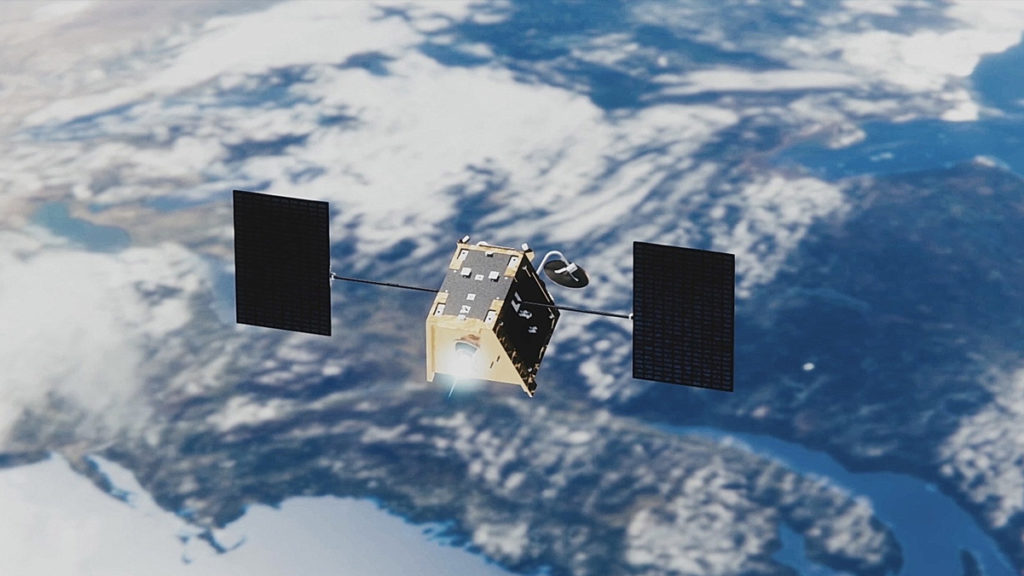
Photo / OneWeb
OneWeb upped the ante on the non-geo stationary orbit concept (LEO), literally, with investments to date totaling $3.4 Billion , as of March.
In addition to AirBus, OneWeb is now also backed by Richard Branson, Coca-Cola and venture capital firm Softbank. Up to 5$ billion may be needed to get their 5G ready network up and running.
After inking the deal with AirBus, the first six satellites were built in France. Now, they are gearing up to continue in Florida. Oddly, the Florida facility is across the street (!) from Jeff Bezos’ Blue Origin Factory.
The first six of the initial 648 were successfully launched on February 27. More Satellites are expected to be launched during the year.
Additional launches for 648 micro-satellites to operate at 750 miles in altitude are planned. The company hopes the constellation will be fully operational by 2021.
Eventually the total number of satellites could rise to 1,972 for which it has acquired priority spectrum license rights. Plans for an additional 2000 have been filed with US regulators.
Google Keeps Searching
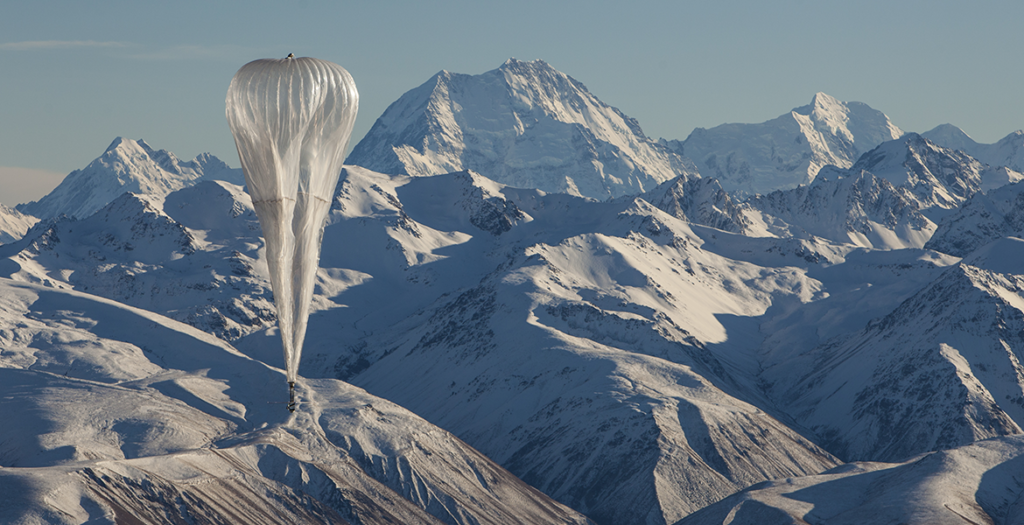
Photo / Loon
Alphabet Inc (Google’s parent company) has Loon. Using balloons to take antennas into the stratosphere, a much larger coverage area can be reached vs. a terrestrial tower. (such as a cell tower)
In January a partnership was announced with TeleSat (also partnered recently with Blue Origins, as outlined above) to take the software systems developed for its balloons and apply them to an LEO micro-satellite constellation.
Telesat currently envisions between 292 and 512 satellites in orbit and initial commercial services are planned to commence by 2022.
In July 2018 Google announced that Loon along with Wing, both initially founded as “X moonshot projects“, would henceforth be full independent companies within the Alphabet Corporate Umbrella. In addition to the TeleSat project, Loon plans to partner with mobile carriers across the globe. An example of this is the current deal with Telekom Kenya, which Loon is helping to extend its coverage to remote areas of the country.
Facebook Pulls Out…All The Stops
Although perhaps founded with the best intentions, Facebook’s “FreeBasics” project somehow always appeared to involve tailoring its approach in order to serve its own interests.
After allowing only Facebook-sanctioned services and data to FreeBasics users it came with little surprise that a public backlash emerged.
In February of 2016, Free Basics was banned in India for unlawfully prioritizing certain sites over others. However, Free Basics is still up and running in over sixty countries. Facebook also still has a vast influence in Africa.
Facebook estimates that its efforts to increase internet connectivity worldwide, over 100 million new users are now online.
LeoSat: All Biz at the High End
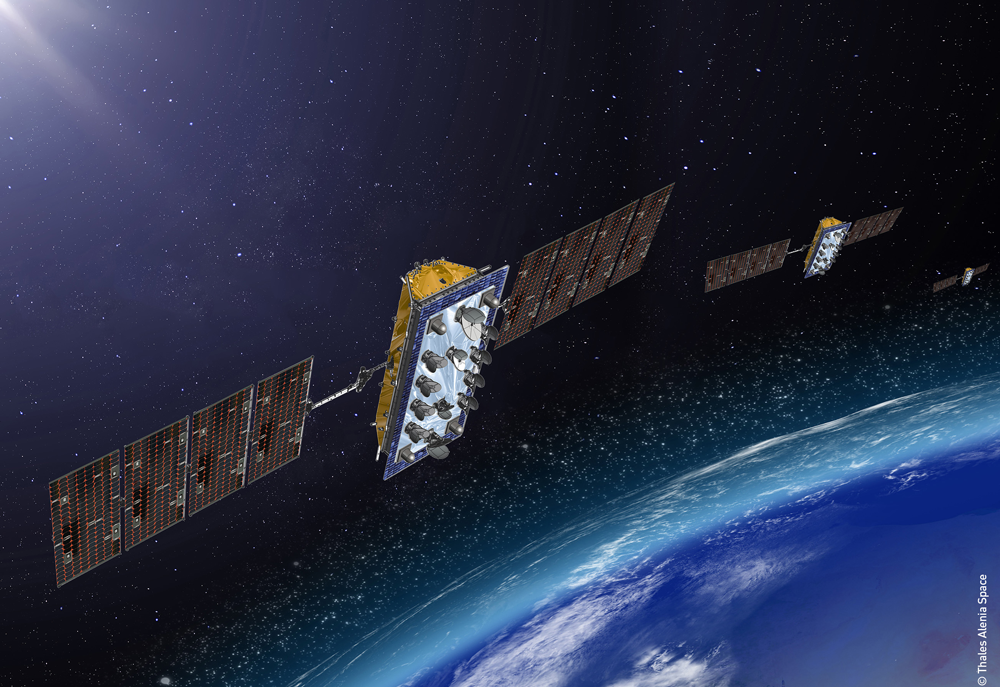
Photo / Thales Alenia Space
Focusing on speed, full earth coverage, direct sat-to-sat optical links without the need for terrestrial stations, LeoSat is positioned to be a serious and unique entrant into the satellite wars.
Designed for large business and government customers, LeoSat already has over 1$ billion in pre-booked orders from enterprise level clients. In March, a new contract with Saudi Arabian communications firm SkyBand was announced.
Based in Washington D.C., LeoSat has set 2022 as its target date for between 78-108 satellites to reach orbit. As with some other competitors above, an initial launch of 2 satellites is planned for 2019.
Using its unique high throughput satellite system (HTS) an optical laser-based backbone will be implemented in space. The backbone will be comprised of 118 LEO satellites in an MPLS network, each with a direct laser based optical link to the others.
This will achieve a projected speed of 1.5 times current land-based fiber-optic networks at 1.6 to 5.2 Gigabits p.s., all without terrestrial touch-points in a globally interlinked constellation.
Without a hyper-famous heavy hitter, LeoSat is still not to be overlooked. More than just an a company with an Apt brand name, LeoSat has a solid list of accomplishments and a serious plan to compete in its chosen niche.
Find books on Big Tech, Sustainable Energy, Economics and many other topics at our sister site: Cherrybooks on Bookshop.org
Enjoy Lynxotic at Apple News on your iPhone, iPad or Mac and subscribe to our newsletter.
Lynxotic may receive a small commission based on any purchases made by following links from this page.

